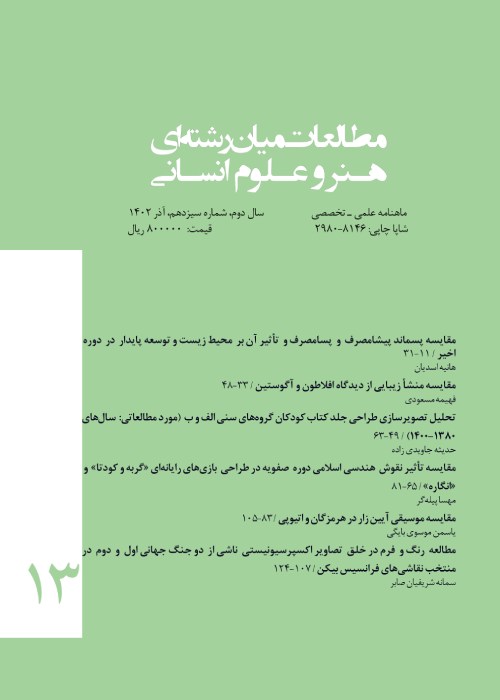Symbology of the Lotus Motif on the Body of the Eastern Staircase of Apadana
One of the most significant plant and ancient symbols is the lotus flower, considered one of the famous symbols before and after Islam. In various religions, this flower has been associated with the creation of gods, saviors, and prophets. In this research, the symbols of this flower are examined in the body of the eastern staircase of Apadana. In this research, the library method and the review and study of written reports have been used in a descriptive-analytical way with a comparative approach. The results of this research show that the lily is one of the critical artistic symbols in the context of history, architecture, and painting. The lotus is one of those plants considered in various rituals, and in Iranian mythology, the water lily is the symbol of Anahita, the goddess of water in Iranian belief. As the Iranians called the lotus flower, the flower of Venus, Venus is the main idea of the female existence in the religious traditions of ancient Iran. The most obvious manifestation of the lotus in ancient Iranian art is in the Achaemenid period. The art of the Achaemenid period can be considered ritualistic and symbolic art, and the manifestation of these symbols is in Persepolis. In mythology, the lotus has been one of the great symbols of creation and is rooted in water, which symbolizes purification, purity, and rebirth. Because in the hand of the Sun God (Ra), there is a lotus, which can mean the appearance and manifestation on earth. The use of the lotus on the eastern staircase of Apadana, assuming that the stairs are a place for ascension and going to a higher level, while the circularity of the lotus signifies eternity, it can represent the course of the journey due to the repetition of this flower along the staircase. May the placing of this flower under the cypress tree, which had a spiritual aspect in ancient Iran and was the symbol of the god of plants, represents this course of walking under the banner of the Creator and can confirm the validity of this perception.
Achaemenians , symbol , flower , lotus , Apadana
- حق عضویت دریافتی صرف حمایت از نشریات عضو و نگهداری، تکمیل و توسعه مگیران میشود.
- پرداخت حق اشتراک و دانلود مقالات اجازه بازنشر آن در سایر رسانههای چاپی و دیجیتال را به کاربر نمیدهد.


